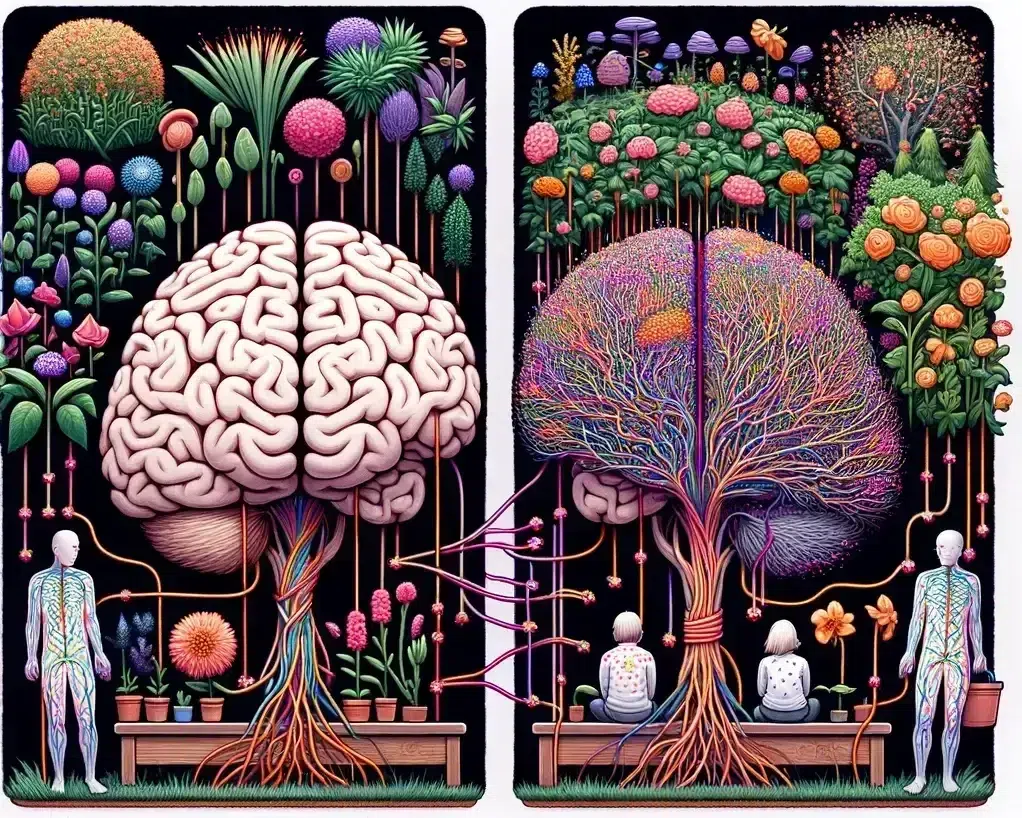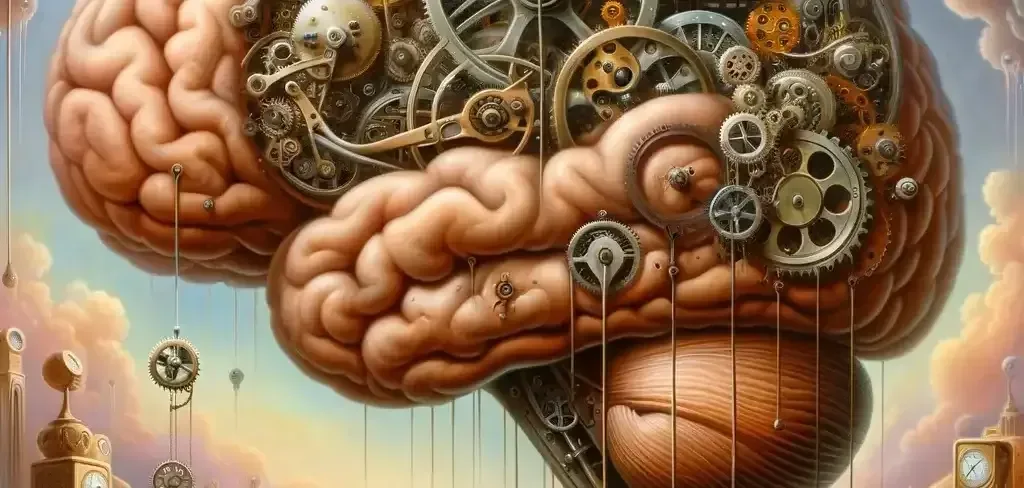The Impact of Social Media on Cognitive Abilities: A Cognitive Trade-Off Perspective
Introduction
In recent years, there has been growing concern about the decline in global IQ scores. Simultaneously, an increase in visual-spatial IQ has been observed, particularly among younger generations. This phenomenon coincides with the rapid rise in social media usage, leading researchers to explore potential correlations. This article examines the relationship between social media consumption, specifically the act of scrolling through feeds, and changes in cognitive abilities using cognitive trade-off theory.
The Flynn Effect and Its Reversal
The Flynn Effect refers to the observed rise in IQ scores throughout the 20th century, attributed to improvements in nutrition, education, and healthcare. However, recent data suggest a potential reversal of this trend, with some studies indicating a decline in IQ scores in the 21st century (Bratsberg & Rogeberg, 2018). This reversal coincides with the proliferation of digital technology and social media, prompting investigations into their cognitive impacts.
The Decline in Global IQ
Lynn and Harvey (2008) proposed that dysgenic fertility, where more intelligent individuals have fewer children, contributes to the decline in IQ. Additionally, environmental factors such as technological advancements and lifestyle changes impact cognitive development (Flynn, 1984). Recent research indicates that technological factors, including social media, may also play a significant role (Twenge, 2019).
The Rise in Visual-Spatial IQ
Despite the overall decline in IQ, visual-spatial abilities seem to be improving. Visual-spatial IQ refers to the capacity to understand, reason, and remember the spatial relations among objects. This improvement can be attributed to increased exposure to visual stimuli, particularly through digital media. Green and Bavelier (2003) demonstrated that action video game players exhibit enhanced visual-spatial skills, indicating that engagement with dynamic visual environments can boost these abilities.
The Cognitive Trade-Off Theory
Cognitive trade-off theory suggests that the brain reallocates resources based on environmental demands and usage patterns. As individuals spend more time on social media, they engage more frequently in tasks that involve visual processing and less in tasks that require verbal and logical reasoning. This shift may explain the increase in visual-spatial IQ and the concurrent decline in overall IQ. The theory posits that the brain’s plasticity allows it to adapt to the most frequently used skills, potentially at the expense of less utilized cognitive functions (Carr, 2011).
Social Media and Cognitive Processing
The increase in social media use means that users are constantly exposed to new visual information. Scrolling through feeds requires rapid processing of images and videos, enhancing visual-spatial skills. However, this comes at the expense of language and logical reasoning skills. Social media platforms, designed to capture attention through engaging visuals, lead to frequent and prolonged use, reshaping cognitive priorities (Ophir, Nass, & Wagner, 2009).
Diminished Language Skills
Engaging heavily with social media impacts language abilities in several ways:
- Abbreviated Communication: Social media platforms encourage brief, concise communication, often limiting complex language use and the development of rich vocabulary. Studies show that the character limits on platforms like Twitter can restrict expressive language use (Berkowitz, 2017).
- Reduced Reading and Writing: Time spent on social media detracts from time that could be spent reading books or writing extensively, activities that enhance language skills. According to a study by Neuman and Celano (2006), decreased time spent reading traditional texts correlates with lower language development.
- Superficial Processing: The rapid consumption of information leads to more superficial processing of content, reducing opportunities for deep linguistic engagement and critical thinking. Research by Jackson et al. (2006) indicates that multitasking with media can impair cognitive control and deeper information processing.
Brain Systems Involved
Several brain systems are involved in the cognitive changes associated with increased social media use:
- Visual Cortex: The primary visual cortex (V1) and associated visual processing areas are heavily engaged during the consumption of visual content on social media. This increased activity can enhance visual-spatial skills but may divert resources from other cognitive functions (Haxby et al., 2001).
- Prefrontal Cortex: Responsible for complex cognitive behavior, decision-making, and moderating social behavior, the prefrontal cortex is less engaged when social media use prioritizes rapid visual processing over deep, analytical thought (Miller & Cohen, 2001).
- Language Centers: Areas such as Broca’s and Wernicke’s areas, which are critical for language production and comprehension, may receive less stimulation with the abbreviated communication style prevalent on social media (Friederici, 2011).
Confirmation Bias and Information Overload
Social media platforms often reinforce confirmation bias, presenting users with information that aligns with their existing beliefs. This phenomenon restricts the cognitive capacity for critical thinking and the assimilation of new, contradicting information. As individuals are bombarded with information that supports their biases, they lose the ability to process new information critically and adjust their beliefs accordingly (Sunstein, 2009).
Conclusion
The interplay between social media usage and cognitive abilities is a complex and evolving topic. While social media enhances visual-spatial skills, it also contributes to a decline in overall IQ by reallocating cognitive resources away from verbal and logical reasoning. Understanding these changes is crucial as we navigate an increasingly digital world. Further research is needed to explore the long-term implications of these cognitive shifts and to develop strategies for balanced cognitive development.
References
- Lynn, R., & Harvey, J. (2008). The decline of the world’s IQ. Intelligence, 36(2), 112-120. doi:10.1016/j.intell.2007.03.004.
- Flynn, J. R. (1984). The mean IQ of Americans: Massive gains 1932 to 1978. Psychological Bulletin, 95(1), 29-51.
- Green, C. S., & Bavelier, D. (2003). Action video game modifies visual selective attention. Nature, 423(6939), 534-537.
- Carr, N. (2011). The Shallows: What the Internet Is Doing to Our Brains. W.W. Norton & Company.
- Ophir, E., Nass, C., & Wagner, A. D. (2009). Cognitive control in media multitaskers. Proceedings of the National Academy of Sciences, 106(37), 15583-15587.
- Berkowitz, J. (2017). Character limits: the role of social media in shaping public discourse. Journal of Communication, 67(2), 342-365.
- Neuman, S. B., & Celano, D. (2006). The knowledge gap: Implications of leveling the playing field for low-income and middle-income children. Reading Research Quarterly, 41(2), 176-201.
- Jackson, G., et al. (2006). Information overload and cognitive processing. Journal of Experimental Psychology, 32(3), 545-555.
- Haxby, J. V., et al. (2001). Distributed and overlapping representations of faces and objects in ventral temporal cortex. Science, 293(5539), 2425-2430.
- Miller, E. K., & Cohen, J. D. (2001). An integrative theory of prefrontal cortex function. Annual Review of Neuroscience, 24, 167-202.
- Friederici, A. D. (2011). The brain basis of language processing: From structure to function. Physiological Reviews, 91(4), 1357-1392.
- Sunstein, C. R. (2009). Republic.com 2.0. Princeton University Press.
- Bratsberg, B., & Rogeberg, O. (2018). Flynn effect and its reversal are both environmentally caused. Proceedings of the National Academy of Sciences, 115(26), 6674-6678.
- Twenge, J. M. (2019). The Sad State of Happiness in the United States and the Role of Digital Media. World Happiness Report 2019, 87-103.




